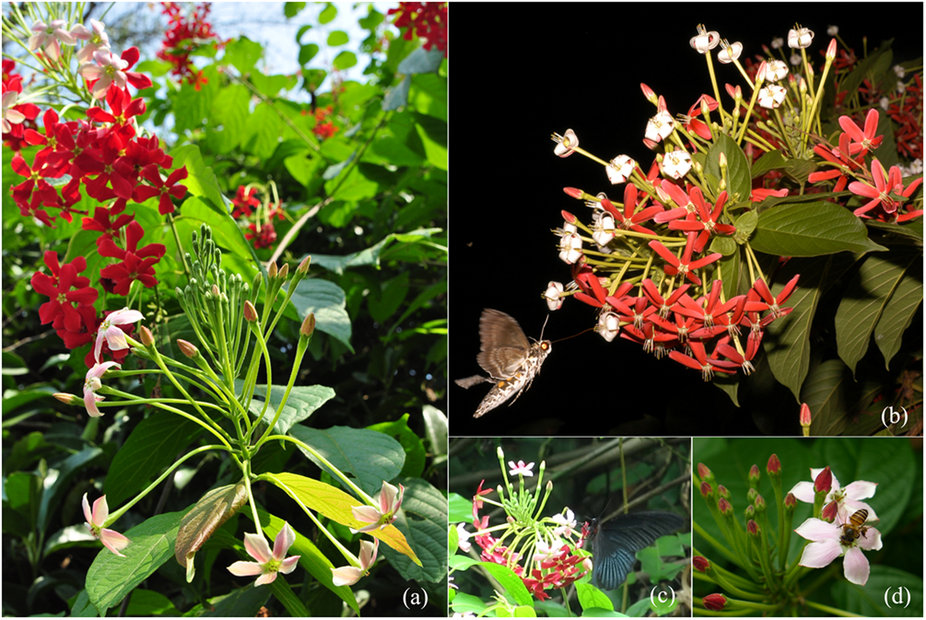
Flower colors act as sensory signals that attract pollinators by advertising the quality and quantity of floral rewards. Floral color changes may act as visual signals for pollinators to avoid old flowers, increase pollinator foraging efficiency, and pollen transfer. Previous studies investigated the effects of color change on the rewards for pollinators and reproductive success; however, little is known about the contribution of different floral color stages and other characteristics, such as nectar and scent, to pollinator attraction.
Prof. ZHANG Ling and her students of Xishuangbanna Tropical Botanical Garden used Quisqualis indica (Combretaceae), an Asian tropical climber that undergoes a floral color change from white to pink to red, to test whether floral color change may be related to shift from moth to butterfly pollination. The researchers examined the potential relationship of floral color change with nectar and scent, as well as the resulted changes in pollinator attraction and reproductive succes.
The researchers asked whether the nectar secretion and scent intensity pattern was related to the floral color change and whether floral color change was related to pollinator shift. They then wanted to see how pollination was achieved and what the functional significance of floral color change was.
They found that Q. indica had an unusual pollination system. In the white floral stage, both moths and bees were attracted. Bees and butterflies were attracted in the pink floral stage, and butterflies in the red floral stage. All sets of pollinators facilitated cross-pollination and played a role in reproductive success. The secretion pattern was related to changes in floral color. The scent profiles changed, and the scent emission rate decreased with the floral color change from white to pink to red. However, pollinators in the white floral stage contributed more to fruit production than those in other stages, suggesting tat diurnal pollination was a form of compensation, in cases that nocturnal pollination was not successful.
The study indicated that nectar and scent secretion patterns reflected the floral color change rhythm in Q. Indica. Nectar and scent secretion along with floral color change in Q. indica affected pollinator behaviour and promoted reproductive fitness.
The study entitled "Pollinator responses to floral color change, nectar, and scent promote reproductive fitness in Quisqualis indica (Combretaceae)" has been published in Scientific Reports.

(a) Blooming inflorescences showing floral colour change from pink to red (Image by LIU Guangyu); (b) A moth visiting white flowers at night (Image by Dr. John Kress); (c) A butterfly visiting pink and red flowers in the day (Image by ZHANG Ling): (d) A bee visiting pink flowers (Image by ZHANG Ling).

86-10-68597521 (day)
86-10-68597289 (night)

52 Sanlihe Rd., Xicheng District,
Beijing, China (100864)

